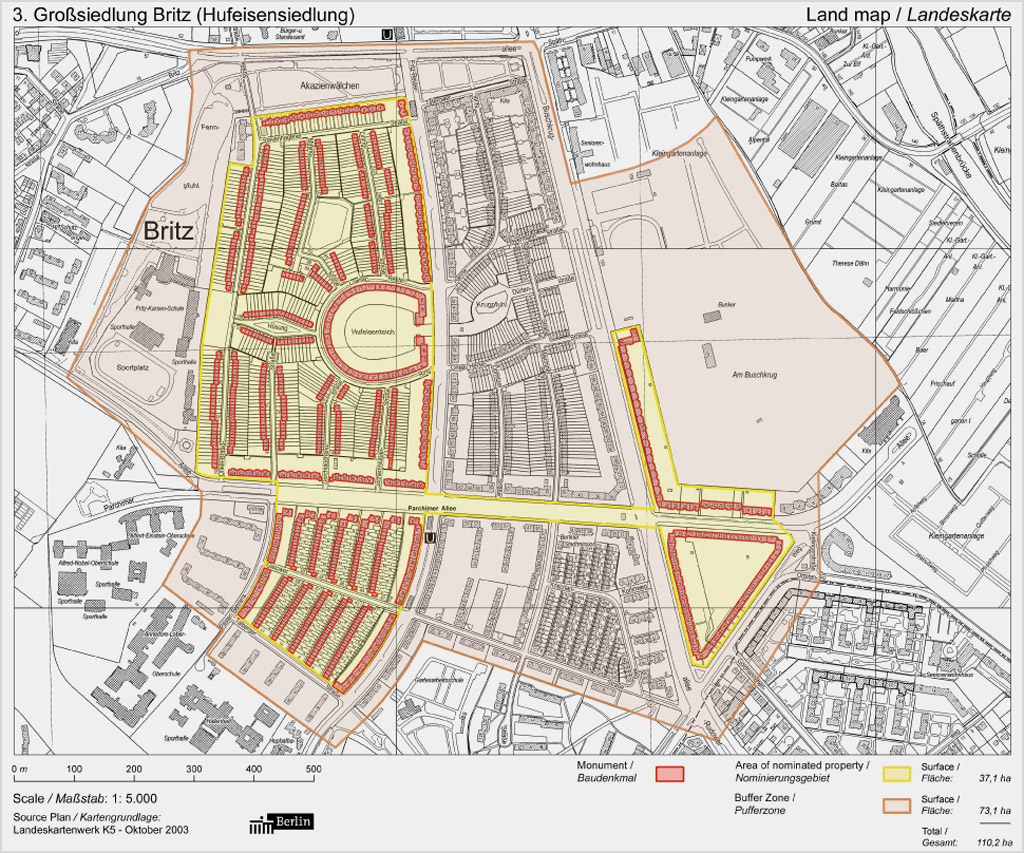Buffer zone
New buildings or conversions located near an outstanding monument or UNESCO World Heritage Site are subject to special requirements. This is why World Heritage has clearly defined so-called buffer zones, which are designed to prevent the appearance and overall impact of these sites from being undermined. An example would be a new high-rise building that obstructs the view of an important historical tower or church. The city of Dresden shows that such scenarios are not just theory. Dresden was stripped of its UNESCO World Heritage status because a new bridge obstructed the view of its unique skyline. Similar discussions took place about Cologne’s plans to erect buildings that would have obscured the view of Cologne Cathedral, a World Heritage Site.
Berlin’s World Heritage housing estates are girded by a buffer zone that we have marked in bright pink on our interactive tour maps. The actual World Heritage areas of the estates are highlighted in yellow within the buffer zones. This colour scheme matches the one used in the official maps published by the city administration (see example below).

